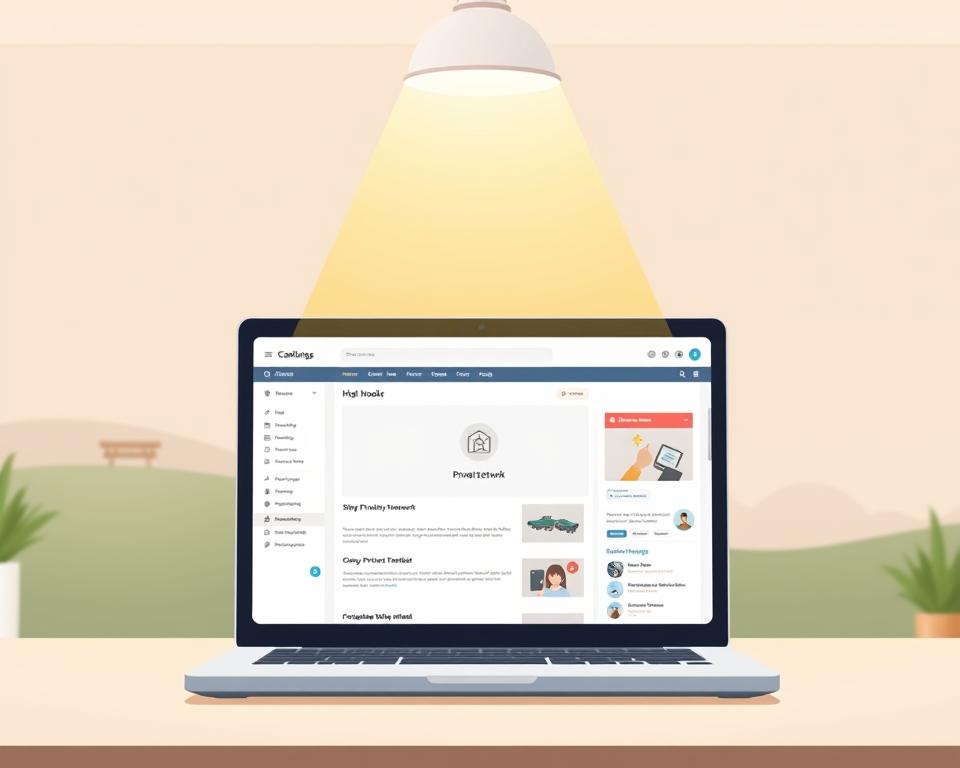Decoding PBN Link Strategies
Did you realize almost 60% of SEO experts have employed PBN links? The appeal of a Private Blog Network (PBN) is its power to boost a website’s authority. Consequently, search engines may reward you with improved rankings. Yet, what truly defines a Private Blog Network in the SEO world? While PBNs promise swift SEO wins, they present major perils. You risk incurring serious sanctions from Google. Let’s dive into the fundamentals of private blog network links and why they’re so captivating to many in the SEO field.
PBN Explained
A PBN comprises multiple sites set up to generate private blog network backlinks. It works by sending SEO value via backlinks from secondary sites to your core site. Often these networks rely on expired domains that still hold some mojo, crafting a veneer of legitimacy.
A PBN’s intent is straightforward. Site owners use them to improve their online presence. They achieve this through:
- Getting valuable backlinks to enhance rankings.
- Managing link parameters for perfect keyword targeting.
- Creating an ecosystem of interlinked blogs that appear organic.

Mechanics of PBN Backlinks
They function by simulating organic endorsements through private blog network backlinks. When a pbn site links to another, it artificially increases that site’s perceived value and credibility.
SEO practitioners meticulously map keyword and domain usage throughout their network. While this method can quickly improve rankings, it poses significant risks.
Backlinks should be cloaked within credible, value-driven articles to avoid detection.
Why SEOs Love PBNs
A private blog network (PBN) offers numerous advantages for SEOs looking to enhance their backlink profiles. You gain tight oversight of each link’s placement and anchor text.
PBN expired domains, often rich in authority, provide a unique opportunity to create strong backlinks.
With PBNs, you can tailor anchor text strategy to pinpoint exact keywords.
PBN Pitfalls
But these benefits come with major downsides. A major concern is the risk of Google penalizing websites that use these networks.
PBN vs. Outreach
Conventional outreach can be slow and uncertain. They eliminate the reliance on third-party permissions.
Best Practices for Managing PBNs
Safeguard your network by following these protocols. Ensure no footprints link your PBN to your main site.
Identifying PBN Links on Your Website
Spotting PBN links on your site is key to keeping your domain reputation healthy.
| Indicators of PBN Links | Description |
|---|---|
| Low-Quality Domains | Links from domains with poor authority or less than optimal rankings. |
| Irrelevant Content | Links embedded in content that does not match your site’s niche. |
| Suspicious Anchor Text | Repetitive or irrelevant anchor text patterns. |
| Thematic Similarity | Lack of a coherent theme among linking pages and domains. |
How to Disavow Private Blog Network Links
- Identify harmful PBN backlinks through thorough analysis.
- Create a disavow file correctly, listing specific URLs or domains to disavow.
- Upload the disavow file to Google Search Console.
Ethical Link Building Alternatives
High-quality content and influencer collaborations also drive organic links.
Clearing Up PBN Myths
Many assume PBNs are risk-free quick fixes.
Where PBNs Are Headed
| Factor | PBNs | Future SEO Practices |
|---|---|---|
| Content Quality | Low emphasis on genuine content | High emphasis on high-quality, valuable content |
| Risk Factor | High risk of penalties | Lower risk with authentic practices |
| User Engagement | Limited engagement | Enhanced user interaction and loyalty |
| Sustainability | Unsustainable in the long term | Focus on sustainable growth |
Wrapping It Up
Yet, the ethical and practical risks are substantial.
